Events
| Name | organizer | Where |
|---|---|---|
| MBCC “Doing Business with Mongolia seminar and Christmas Receptiom” Dec 10. 2025 London UK | MBCCI | London UK Goodman LLC |
NEWS
TVET UK opens the door in Mongolia by MBD www.mongolianbusinessdatabase.com
TVET UK (www.tvetuk.org) ratified an MoU with MBD in London on March 28. 2019 during the MBCCI's "Doing business with Mongolia" seminar for its TVET UK Skills Network online training program and further institutional development in the country. Some of the qualifications of the courses are UK accredited and certified which are accepted globally.
TVET UK (Technical Vocational Education and Training UK) is the UK’s only organisation dedicated to exporting the capabilities of the technical and vocational education sector. Its members are the UK’s leading education providers and suppliers with a wealth of experience in delivering a diverse range of international commercial projects.
(Please visit the global online platform at www.tvetuk.com and contact at contact@mongolianbusinessdatabase.com or/and 99066062 for more inquiries)
MBD (Mongolian Business Database NGO) is the project managed by B2B Mongolia which aims to be a "Bridge of the business with Mongolia". Its global B2B portal www.mongolianbusinessdatabase.comis number 1 ranking website on Google's "Mongolia business or/and Business Mongolia" search according to the business visitors access from appx 90 countries as of today (Google analytics report).
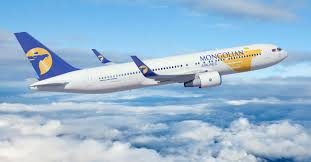
Uzbekistan, Mongolia discuss possible launch of direct flights www.akipress.com
The Foreign Ministries of Uzbekistan and Mongolia held the fifth round of political consultations on April 10 in Tashkent, the Foreign Ministry of Uzbekistan said.
The delegations of two countries discussed current cooperation and its prospects int rade, investment, economic, cultural, humanitarian and other spheres.
The Mongolian side suggested to consider possibility of launch of direct flights between Ulaanbaatar and Tashkent.
The sides expressed interest in organization of business forums, establishment of the business council.
Multilateral cooperation in the framework of the United Nations and the Shanghai Cooperation Organization was considered among other issues.
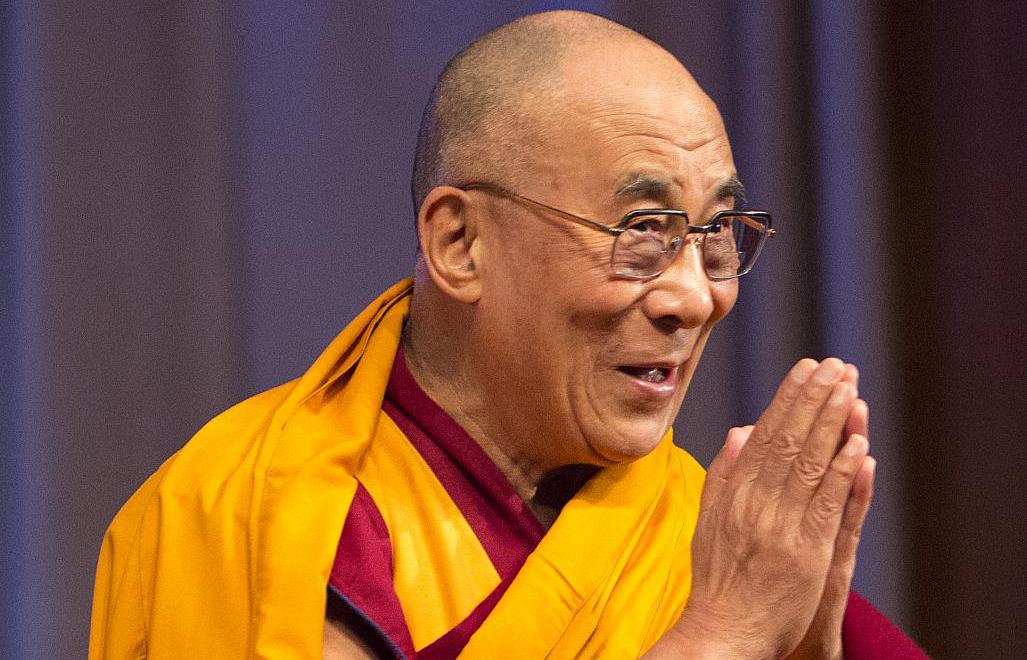
Dalai Lama's reincarnation must comply with China's laws, Communist Party says www.cnn.com
(CNN)The reincarnation of the Dalai Lama must "comply with Chinese laws," the Chinese Communist Party government has said as the Tibetan spiritual leader recovers in hospital from a chest infection.
Asked about the 83-year-old Buddhist monk's hospitalization on Wednesday, Chinese Foreign Ministry spokesman Lu Kang said Beijing wasn't aware of the physical condition of the 14th Dalai Lama. But he added that there are "clear rules" regarding the reincarnation of "the living Buddha."
"Reincarnation of living Buddhas, including the Dalai Lama, must comply with Chinese laws and regulations and follow religious rituals and historical conventions," Lu said, adding that China respected religious freedom for all its citizens.
The Dalai Lama has lived in India since his self-imposed exile from Tibet in 1959 following the arrival of Chinese troops in the region, which Beijing claims has always been part of China.
Since then, he has become an international celebrity, winning a Nobel Peace prize and feted by some of the world's top leaders. He has also remained a perpetual thorn in the side of the Chinese government.
The Dalai Lama's private secretary Tenzin Taklha said Tuesday the aging monk had been hospitalized with a chest infection after returning to his home in Dharamsala, India, following a meeting in New Delhi.
On Thursday, Taklha said he would be released soon. "He had a chest infection and as suggested by doctors, he took some antibiotics. He is much better now," he said.
But the spiritual leader's illness has once again raised questions over what will happen to Tibetans and their religion when the Dalai Lama dies.
Last Dalai Lama?
It isn't completely clear whether the Dalai Lama will allow himself to be reincarnated after he dies. The Tibetan spiritual leader has hinted in recent years that he might be the last person to hold the title.
Previously, the title of Dalai Lama, the highest-ranking leader in Tibetan Buddhism, was bestowed on the reincarnation of a line of revered religious teachers, whose identity was chosen by their senior monks.
The 14th Dalai Lama was enthroned when he was four years old after being discovered by a delegation of monks.
University's China Studies Research Center, said there was no requirement for the next Dalai Lama to be born in Tibet.
In a statement released by the spiritual leader in 2011, the Dalai Lama said it was inappropriate for the Chinese government to supervise his reincarnation.
"They say they are waiting for my death and will recognize a 15th Dalai Lama of their choice. It is clear from their recent rules and regulations and subsequent declarations that they have a detailed strategy to deceive Tibetans," he said.
The leader of Tibetan Buddhism said in his statement he would consult with his fellow monks when he was "about 90" on whether the institution of Dalai Lama should continue.
China is an officially atheist state. While the Communist government promises religious freedom to all citizens, there have been worrying signs of a growing crackdown on religion in the past decade.
In the western region of Xinjiang, as many as two million Muslim-majority Uyghurs have been placed in detention centers as part of a policy to eradicate their cultural and religious practices, according to the US state department.
In 2018, authorities tore down dozens of predominantly Protestant Christian churches through the country after ruling that they were built or run "illegally."
Reincarnation subject to approval
The Dalai Lama's fears of interference by Beijing in the reincarnation process are not without precedent.
In the 1990s, a process to find the reincarnation of the 11th Panchen Lama, another important religious leader in Tibetan Buddhism, ended in division and controversy after the Dalai Lama's chosen candidate disappeared and a successor selected by the Chinese government was put in his place.
But Gamble said the Dalai Lama would be under heavy social pressure to reincarnate and, in the end, it might not be up to him anyway.
"In some ways, it's not really his choice. If people go looking for him, they'll find him," she said. The most likely outcome was for two Dalai Lamas to emerge after the 14th holder of the title passes away, Gamble said -- one picked by the Tibetans-in-exile and one selected by Beijing.
Although he no longer calls for Tibetan independence, the Dalai Lama has continued to demand cultural autonomy for Tibet. China calls him a traitor and "a wolf in monk's robes."
He has also remained a point of tension between India and China. Nearly 100,000 Tibetan refugees live in India after fleeing China in 1959.
The Dalai Lama has faded from the spotlight in recent years. In 2018, he announced that he would be cutting back his international travel, citing age and exhaustion.
Asked in a recent interview with Reuters what might happen after his death, the Dalai Lama anticipated a possible attempt by Beijing to foist a successor on Tibetan Buddhists.
In the interview, the 1989 Nobel Peace Prize laureate said: "In future, in case you see two Dalai Lamas come, one from here, in a free country, one is chosen by Chinese, and then nobody will trust, nobody will respect (the one chosen by China). So that's an additional problem for the Chinese. It's possible, it can happen."
Article five of a Chinese government law, which lays out the "management measures" for Tibetan Buddhism, says the reincarnation of a living Buddha is "subject to an application for approval."
CNN's Sugam Pokharel contributed to this article.

Asia’s mining sector offsets risk with reward — report www.mining.com
Asia's mining sector continues to hold the greatest rewards globally, with positive business environments, rich mineral deposits, supportive infrastructure and political stability in countries holding the top positions in Fitch Solutions' Asia Mining Risk/Reward Index.
The analyst’s latest report, released Thursday, revealed that Australia continues to reign at the top, while Myanmar and the Philippines, in an emerging Asian market, remain the regional laggards.
Factors enabling Australia's outperformance include positive business environment, robust mineral deposits and solid infrastructure. Contrary to the high scores for rewards, the Asia region ranks second lowest for industry risks
Mongolia emerged as an investment hot spot for untapped reserves, and the availability of rich reserves will continue to attract investors.
Contrary to the high scores for rewards, the Asia region ranks second lowest for industry risks, just above Sub Saharan Africa, Fitch reports.
This partly is due to Asia having the second greatest vulnerability to commodity price volatility globally, after the Middle East and North Africa (MENA), which measures the relative vulnerability to price volatility by country according to the three largest mining commodities produced locally.
Globally, Asia has the second highest score, after Europe, on the Mining Risk/Reward Index, with a score of 55.1, maintaining its position from last quarter. Asia stands out with the highest average industry rewards due to having the largest mining sector size globally.
Emerging markets including Myanmar and the Philippines will continue to underperform, Fitch predicts. The two countries are characterised by weak mining reserves, poor regulatory framework, corruption and increasing resource nationalism.
Please review the full report at the source.
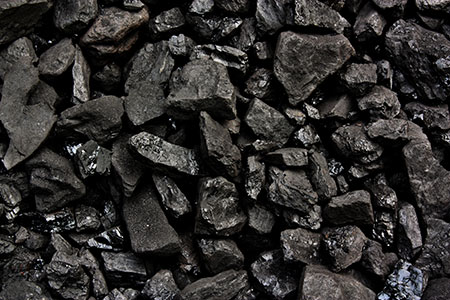
Thermal Power Plant commissioned in Bulgan aimag www.montsame.mn
Bulgan/MONTSAME/. A Thermal Power Plant, built by the state funding and ‘Energy Plus’ LLC, has commissioned today in Bulgan aimag.
This 35MW TPP equipped with automatic control system and advanced technologies including smoke-filtration will provide the aimag center with heating.
The new TPP is expected to improve heating supply in the aimag’s center and considerably reduce air pollution alongside up to 40-percent reduction in expenses on coal consumption and electricity.
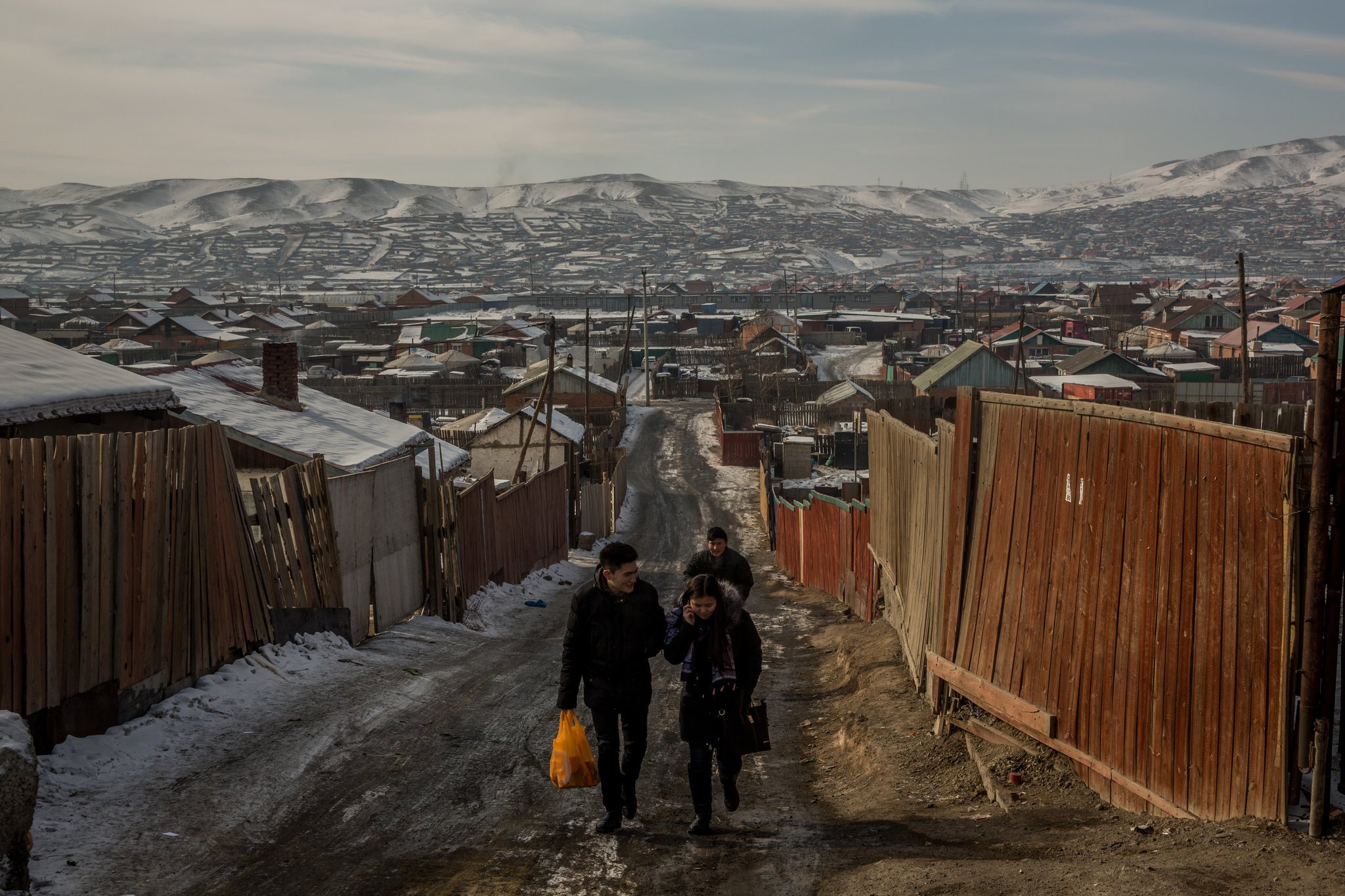
7220 households to be connected with central heating system www.montsame.mn
Ulaanbaatar/MONTSAME/. Today, Prime Minister U.Khurelsukh checked the ongoing process of infrastructure constructions in Bayankhoshuu ger area, Ulaanbaatar and gave assignments.
Within the framework to establish Sub-centers of infrastructure for ger area development, constructional works of the physical infrastructure to connect ger area with central heating system are currently underway in Songinokhairkhan and Sukhbaatar districts. By doing so, 7220 households of ger areas in the districts will be connected with the central heating system, which means that about 28.5 thousand people will be no longer to burn nearly 10 thousand tons of coal next winter.
Moreover, housing projects are expected to be implemented based on the installed infrastructure of the Bayankhoshuu and Selbe subcenters that are expected to be operational by 2020.
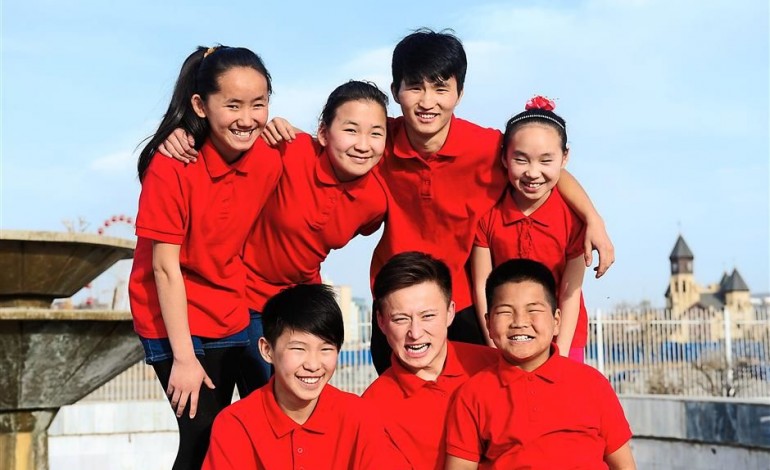
Education plays important role in boosting China-Mongolia friendship: ambassador www.globaltimes.cn
Education has been playing an important role in strengthening bilateral cooperation and friendship between China and Mongolia, Chinese Ambassador to Mongolia Xing Haiming said here Thursday. Xing made the remarks during the opening ceremony of the 7th Congress of Mongolian Teachers in the country's capital of Ulan Bator via video message.
"Education is a vital part of people-to-people and cultural exchanges between to two countries, thus playing a significant role in bringing the two peoples closer and improving bilateral relations," Xing said.
According to statistics, at least 10,000 Mongolian students have studied in China in recent years, Xing said, adding that the Chinese government provides more than 200 government scholarships to Mongolian students each year.
The Chinese ambassador expressed confidence that the number of young Mongolians wishing to study in China will increase in the coming years.
Around 800 selected teachers from every corner of Mongolia participated in the congress to explore ways to address the pressing problems facing Mongolian teachers and the education sector.
The first Congress of Mongolian Teachers was held in 1935 with the most recent taking place in 1996, according to the Mongolian Ministry of Education, Culture, Science and Sports.
Currently, more than 40,000 teachers work in Mongolia's education sector and the average monthly salary of Mongolian teachers in public schools are around 240 US dollars, the ministry said.
Posted in: DIPLOMACY

Cardin, Sullivan Reintroduce Bill to Increase Trade with Democratic Ally Mongolia www.cardin.senate.gov
WASHINGTON – U.S. Senators Ben Cardin (D-Md.) and Dan Sullivan (R-Alaska) introduced legislation Thursday to improve U.S. trade relations and economic ties with Mongolia, a democratic nation bordering Russia and China that shares many of the same values and national security priorities as the United States. The Mongolia Third Neighbor Trade Act recognizes Mongolia’s success as a democracy, strategic location; sovereignty; territorial integrity; and ability to pursue an independent foreign policy from its neighbors are of high importance to America’s national security. Congressman Ted Yoho (R-Fla.) and Congresswoman Dina Titus (D-Nev.) have introduced companion legislation in the House of Representatives.
Mongolia produces more than one-third of the world’s raw cashmere. Most of it is exported to China and the United States buys nearly all of its cashmere products from China. The Mongolia Third Neighbor Trade Act will allow for duty-free entry of Mongolian cashmere into the United States for items that do not compete directly with any U.S. products. A stronger bilateral trade relationship would benefit Mongolia and the United States by eliminating the shadow of unfair trade practices by China that likely have hampered the emergence of a Mongolian garment industry.
“Mongolia remains a stable democracy in a sea of authoritarianism, and contributes to U.S. national security goals in Asia and in the Middle East. The Mongolia Third Neighbor Trade Act will facilitate job and economic growth that can help both our countries. I am proud that this bipartisan legislation will make that possible,” said Senator Cardin. “Our bill also will help bring stability, employment and economic empowerment to the women of Mongolia who comprise most of the country’s garment industry.”
“Mongolia is an important friend and ally of the United States in a tenuous corner of the world,” said Senator Sullivan. “The Mongolia Third Neighbor Trade Act not only reaffirms the importance of this bilateral relationship, but also aims to enhance our ties and bolster industry in this growing democracy in the Indo-Pacific.”
Senators Cory Gardner (R-Colo.), Sheldon Whitehouse (D-R.I.), David Perdue (R-Ga.) and Patrick Leahy (D-Vt.), as well as Representatives David Price (D-N.C.), James McGovern (D-Mass.), Steve Cohen (D-Tenn.), Brian Fitzpatrick (R-Pa.), Don Young (R-Alaska) and Ralph Norman (R-S.C.), are original cosponsors of this bill.
“The Mongolia Third-Neighbor Trade Act is not just about imports of cashmere; it is smart policy that supports a strong, independent Mongolia that continues to be a beacon of freedom in the region and a strategic partner of the United States,” said Congressman Ted Yoho. “It is estimated that this simple act will create upwards of 40,000 jobs primarily for women who make up ninety percent of the garment industry in Mongolia. We look forward to this strong bipartisan, bicameral legislation being passed under Speaker Pelosi’s leadership and signed into law by President Trump.”
“This legislation sends a signal that the United States must be a strong partner with Mongolia along its path of democratic and economic development,” said Congresswoman Dina Titus. “By diversifying Mongolia’s economy and boosting local employment opportunities – especially for women – we can help this nation overcome its unique challenges to building a thriving, independent economy.”
The legislation makes a number of findings, authorizes the President of the United States to allow for duty-free imports of Mongolian cashmere while protecting certain U.S.-made products, would allow for the sunset of the agreement after 5 years, and requires periodic progress reporting from the executive branch to Congress.
...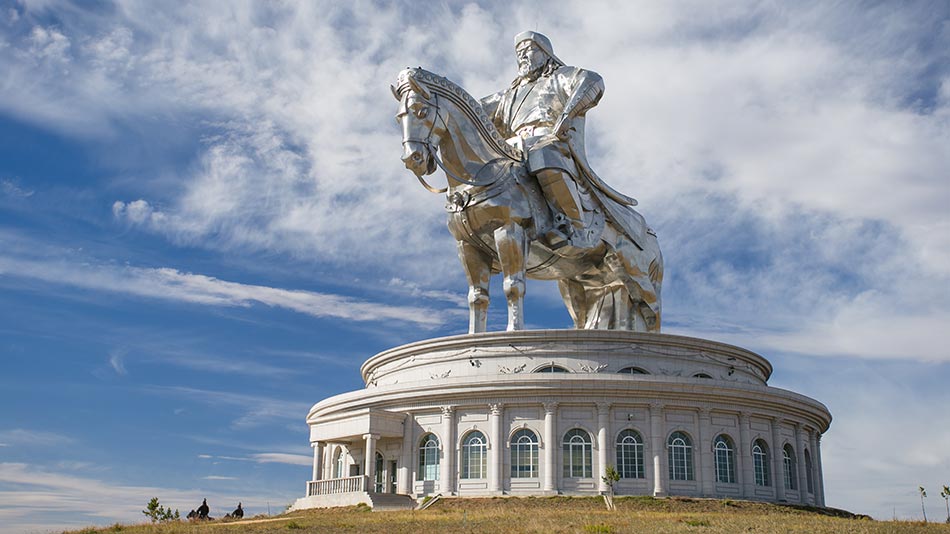
Mongolia to establish institute for Genghis Khan research www.xinhuanet.com
ULAN BATOR, April 11 (Xinhua) -- The government of Mongolia has decided to establish an independent institute for Genghis Khan research, local media reported Thursday, citing the government's press office.
The new institute will also help create a favorable environment for foreign scholars and researchers to conduct research in Mongolia, the reports said.
The decision is also part of the government's efforts to develop heritage tourism, the government's press office said in a statement.
By establishing the institute, it is possible to make the Genghis Khan studies as an independent branch of Mongolian studies, the statement said.
Genghis Khan (1162-1227) founded the Mongol Empire in the 13th century by uniting individual tribes in Northeast Asia.

Mongolia Mining 2019 features traditional mining www.zgm.mn
Mongolia Mining 2019 International Mining & Oil Expo opens for the 9th consecutive year under the theme Responsible Mining-Sustainable Development at the Buyant Ukhaa Sports Palace. The expo will continue until April 12, 2019. The expo aims at featuring traditional mining and emerging oil industries of Mongolia with exhibitors and visitors representing the industry's major companies and the largest number of professionals.
"The mining industry plays an important role in Mongolia's economy. It is making up 87 percent of exports, 72 percent of industrial products, 24 percent of the gross domestic product and foreign capital, as well as 75 percent of the investment. In the first two months of 2019, Mongolia produced a total of 8 million tons of coal, 239.000 tons of copper concentrate, 856.2 kg of gold, 817 tons of molybdenum concentrate, 383.3 thousand tons of iron ore concentrate, 1.3 thousand tons of fluorspar concentrate, 15.900 tons of zinc concentrate, 1.1 million barrels of oil. Coal export increased by 1.5 million tons or 23.1 percent, copper concentrate 30.900 tons or 14.8 percent, ironore concentrate 32.600 tons or 9.3 percent, and zinc concentrate 1.000 tons or 6.7 percent respectively, compared to the same period of previous year," said the Deputy Minister of Mining and Heavy Industry Zagdjav Deleg said in his opening speech.
About 150 mining companies from over 20 countries including Canada, Czech Republic, Australia, USA, Germany, Kazakhstan, and Turkey are participating in the mining exhibitions and introducing their technical services.
The expo is organized by Minex Mongolia LLC with the support of the Ministry of Mining and Heavy Industry, Mongolian National Chamber of Commerce and Industry, Mineral Resources and Petroleum Authority, and Oyu Tolgoi LLC. Transwest Mongolia LLC, Tsbon LLC, Tsgn LLC, and Hera Equipment are the sponsors.
The expo is expected to promote mining companies’ social responsibility, environmentally friendly operations including the rehabilitation, and investments.
- «
- 1
- 2
- 3
- 4
- 5
- 6
- 7
- 8
- 9
- 10
- 11
- 12
- 13
- 14
- 15
- 16
- 17
- 18
- 19
- 20
- 21
- 22
- 23
- 24
- 25
- 26
- 27
- 28
- 29
- 30
- 31
- 32
- 33
- 34
- 35
- 36
- 37
- 38
- 39
- 40
- 41
- 42
- 43
- 44
- 45
- 46
- 47
- 48
- 49
- 50
- 51
- 52
- 53
- 54
- 55
- 56
- 57
- 58
- 59
- 60
- 61
- 62
- 63
- 64
- 65
- 66
- 67
- 68
- 69
- 70
- 71
- 72
- 73
- 74
- 75
- 76
- 77
- 78
- 79
- 80
- 81
- 82
- 83
- 84
- 85
- 86
- 87
- 88
- 89
- 90
- 91
- 92
- 93
- 94
- 95
- 96
- 97
- 98
- 99
- 100
- 101
- 102
- 103
- 104
- 105
- 106
- 107
- 108
- 109
- 110
- 111
- 112
- 113
- 114
- 115
- 116
- 117
- 118
- 119
- 120
- 121
- 122
- 123
- 124
- 125
- 126
- 127
- 128
- 129
- 130
- 131
- 132
- 133
- 134
- 135
- 136
- 137
- 138
- 139
- 140
- 141
- 142
- 143
- 144
- 145
- 146
- 147
- 148
- 149
- 150
- 151
- 152
- 153
- 154
- 155
- 156
- 157
- 158
- 159
- 160
- 161
- 162
- 163
- 164
- 165
- 166
- 167
- 168
- 169
- 170
- 171
- 172
- 173
- 174
- 175
- 176
- 177
- 178
- 179
- 180
- 181
- 182
- 183
- 184
- 185
- 186
- 187
- 188
- 189
- 190
- 191
- 192
- 193
- 194
- 195
- 196
- 197
- 198
- 199
- 200
- 201
- 202
- 203
- 204
- 205
- 206
- 207
- 208
- 209
- 210
- 211
- 212
- 213
- 214
- 215
- 216
- 217
- 218
- 219
- 220
- 221
- 222
- 223
- 224
- 225
- 226
- 227
- 228
- 229
- 230
- 231
- 232
- 233
- 234
- 235
- 236
- 237
- 238
- 239
- 240
- 241
- 242
- 243
- 244
- 245
- 246
- 247
- 248
- 249
- 250
- 251
- 252
- 253
- 254
- 255
- 256
- 257
- 258
- 259
- 260
- 261
- 262
- 263
- 264
- 265
- 266
- 267
- 268
- 269
- 270
- 271
- 272
- 273
- 274
- 275
- 276
- 277
- 278
- 279
- 280
- 281
- 282
- 283
- 284
- 285
- 286
- 287
- 288
- 289
- 290
- 291
- 292
- 293
- 294
- 295
- 296
- 297
- 298
- 299
- 300
- 301
- 302
- 303
- 304
- 305
- 306
- 307
- 308
- 309
- 310
- 311
- 312
- 313
- 314
- 315
- 316
- 317
- 318
- 319
- 320
- 321
- 322
- 323
- 324
- 325
- 326
- 327
- 328
- 329
- 330
- 331
- 332
- 333
- 334
- 335
- 336
- 337
- 338
- 339
- 340
- 341
- 342
- 343
- 344
- 345
- 346
- 347
- 348
- 349
- 350
- 351
- 352
- 353
- 354
- 355
- 356
- 357
- 358
- 359
- 360
- 361
- 362
- 363
- 364
- 365
- 366
- 367
- 368
- 369
- 370
- 371
- 372
- 373
- 374
- 375
- 376
- 377
- 378
- 379
- 380
- 381
- 382
- 383
- 384
- 385
- 386
- 387
- 388
- 389
- 390
- 391
- 392
- 393
- 394
- 395
- 396
- 397
- 398
- 399
- 400
- 401
- 402
- 403
- 404
- 405
- 406
- 407
- 408
- 409
- 410
- 411
- 412
- 413
- 414
- 415
- 416
- 417
- 418
- 419
- 420
- 421
- 422
- 423
- 424
- 425
- 426
- 427
- 428
- 429
- 430
- 431
- 432
- 433
- 434
- 435
- 436
- 437
- 438
- 439
- 440
- 441
- 442
- 443
- 444
- 445
- 446
- 447
- 448
- 449
- 450
- 451
- 452
- 453
- 454
- 455
- 456
- 457
- 458
- 459
- 460
- 461
- 462
- 463
- 464
- 465
- 466
- 467
- 468
- 469
- 470
- 471
- 472
- 473
- 474
- 475
- 476
- 477
- 478
- 479
- 480
- 481
- 482
- 483
- 484
- 485
- 486
- 487
- 488
- 489
- 490
- 491
- 492
- 493
- 494
- 495
- 496
- 497
- 498
- 499
- 500
- 501
- 502
- 503
- 504
- 505
- 506
- 507
- 508
- 509
- 510
- 511
- 512
- 513
- 514
- 515
- 516
- 517
- 518
- 519
- 520
- 521
- 522
- 523
- 524
- 525
- 526
- 527
- 528
- 529
- 530
- 531
- 532
- 533
- 534
- 535
- 536
- 537
- 538
- 539
- 540
- 541
- 542
- 543
- 544
- 545
- 546
- 547
- 548
- 549
- 550
- 551
- 552
- 553
- 554
- 555
- 556
- 557
- 558
- 559
- 560
- 561
- 562
- 563
- 564
- 565
- 566
- 567
- 568
- 569
- 570
- 571
- 572
- 573
- 574
- 575
- 576
- 577
- 578
- 579
- 580
- 581
- 582
- 583
- 584
- 585
- 586
- 587
- 588
- 589
- 590
- 591
- 592
- 593
- 594
- 595
- 596
- 597
- 598
- 599
- 600
- 601
- 602
- 603
- 604
- 605
- 606
- 607
- 608
- 609
- 610
- 611
- 612
- 613
- 614
- 615
- 616
- 617
- 618
- 619
- 620
- 621
- 622
- 623
- 624
- 625
- 626
- 627
- 628
- 629
- 630
- 631
- 632
- 633
- 634
- 635
- 636
- 637
- 638
- 639
- 640
- 641
- 642
- 643
- 644
- 645
- 646
- 647
- 648
- 649
- 650
- 651
- 652
- 653
- 654
- 655
- 656
- 657
- 658
- 659
- 660
- 661
- 662
- 663
- 664
- 665
- 666
- 667
- 668
- 669
- 670
- 671
- 672
- 673
- 674
- 675
- 676
- 677
- 678
- 679
- 680
- 681
- 682
- 683
- 684
- 685
- 686
- 687
- 688
- 689
- 690
- 691
- 692
- 693
- 694
- 695
- 696
- 697
- 698
- 699
- 700
- 701
- 702
- 703
- 704
- 705
- 706
- 707
- 708
- 709
- 710
- 711
- 712
- 713
- 714
- 715
- 716
- 717
- 718
- 719
- 720
- 721
- 722
- 723
- 724
- 725
- 726
- 727
- 728
- 729
- 730
- 731
- 732
- 733
- 734
- 735
- 736
- 737
- 738
- 739
- 740
- 741
- 742
- 743
- 744
- 745
- 746
- 747
- 748
- 749
- 750
- 751
- 752
- 753
- 754
- 755
- 756
- 757
- 758
- 759
- 760
- 761
- 762
- 763
- 764
- 765
- 766
- 767
- 768
- 769
- 770
- 771
- 772
- 773
- 774
- 775
- 776
- 777
- 778
- 779
- 780
- 781
- 782
- 783
- 784
- 785
- 786
- 787
- 788
- 789
- 790
- 791
- 792
- 793
- 794
- 795
- 796
- 797
- 798
- 799
- 800
- 801
- 802
- 803
- 804
- 805
- 806
- 807
- 808
- 809
- 810
- 811
- 812
- 813
- 814
- 815
- 816
- 817
- 818
- 819
- 820
- 821
- 822
- 823
- 824
- 825
- 826
- 827
- 828
- 829
- 830
- 831
- 832
- 833
- 834
- 835
- 836
- 837
- 838
- 839
- 840
- 841
- 842
- 843
- 844
- 845
- 846
- 847
- 848
- 849
- 850
- 851
- 852
- 853
- 854
- 855
- 856
- 857
- 858
- 859
- 860
- 861
- 862
- 863
- 864
- 865
- 866
- 867
- 868
- 869
- 870
- 871
- 872
- 873
- 874
- 875
- 876
- 877
- 878
- 879
- 880
- 881
- 882
- 883
- 884
- 885
- 886
- 887
- 888
- 889
- 890
- 891
- 892
- 893
- 894
- 895
- 896
- 897
- 898
- 899
- 900
- 901
- 902
- 903
- 904
- 905
- 906
- 907
- 908
- 909
- 910
- 911
- 912
- 913
- 914
- 915
- 916
- 917
- 918
- 919
- 920
- 921
- 922
- 923
- 924
- 925
- 926
- 927
- 928
- 929
- 930
- 931
- 932
- 933
- 934
- 935
- 936
- 937
- 938
- 939
- 940
- 941
- 942
- 943
- 944
- 945
- 946
- 947
- 948
- 949
- 950
- 951
- 952
- 953
- 954
- 955
- 956
- 957
- 958
- 959
- 960
- 961
- 962
- 963
- 964
- 965
- 966
- 967
- 968
- 969
- 970
- 971
- 972
- 973
- 974
- 975
- 976
- 977
- 978
- 979
- 980
- 981
- 982
- 983
- 984
- 985
- 986
- 987
- 988
- 989
- 990
- 991
- 992
- 993
- 994
- 995
- 996
- 997
- 998
- 999
- 1000
- 1001
- 1002
- 1003
- 1004
- 1005
- 1006
- 1007
- 1008
- 1009
- 1010
- 1011
- 1012
- 1013
- 1014
- 1015
- 1016
- 1017
- 1018
- 1019
- 1020
- 1021
- 1022
- 1023
- 1024
- 1025
- 1026
- 1027
- 1028
- 1029
- 1030
- 1031
- 1032
- 1033
- 1034
- 1035
- 1036
- 1037
- 1038
- 1039
- 1040
- 1041
- 1042
- 1043
- 1044
- 1045
- 1046
- 1047
- 1048
- 1049
- 1050
- 1051
- 1052
- 1053
- 1054
- 1055
- 1056
- 1057
- 1058
- 1059
- 1060
- 1061
- 1062
- 1063
- 1064
- 1065
- 1066
- 1067
- 1068
- 1069
- 1070
- 1071
- 1072
- 1073
- 1074
- 1075
- 1076
- 1077
- 1078
- 1079
- 1080
- 1081
- 1082
- 1083
- 1084
- 1085
- 1086
- 1087
- 1088
- 1089
- 1090
- 1091
- 1092
- 1093
- 1094
- 1095
- 1096
- 1097
- 1098
- 1099
- 1100
- 1101
- 1102
- 1103
- 1104
- 1105
- 1106
- 1107
- 1108
- 1109
- 1110
- 1111
- 1112
- 1113
- 1114
- 1115
- 1116
- 1117
- 1118
- 1119
- 1120
- 1121
- 1122
- 1123
- 1124
- 1125
- 1126
- 1127
- 1128
- 1129
- 1130
- 1131
- 1132
- 1133
- 1134
- 1135
- 1136
- 1137
- 1138
- 1139
- 1140
- 1141
- 1142
- 1143
- 1144
- 1145
- 1146
- 1147
- 1148
- 1149
- 1150
- 1151
- 1152
- 1153
- 1154
- 1155
- 1156
- 1157
- 1158
- 1159
- 1160
- 1161
- 1162
- 1163
- 1164
- 1165
- 1166
- 1167
- 1168
- 1169
- 1170
- 1171
- 1172
- 1173
- 1174
- 1175
- 1176
- 1177
- 1178
- 1179
- 1180
- 1181
- 1182
- 1183
- 1184
- 1185
- 1186
- 1187
- 1188
- 1189
- 1190
- 1191
- 1192
- 1193
- 1194
- 1195
- 1196
- 1197
- 1198
- 1199
- 1200
- 1201
- 1202
- 1203
- 1204
- 1205
- 1206
- 1207
- 1208
- 1209
- 1210
- 1211
- 1212
- 1213
- 1214
- 1215
- 1216
- 1217
- 1218
- 1219
- 1220
- 1221
- 1222
- 1223
- 1224
- 1225
- 1226
- 1227
- 1228
- 1229
- 1230
- 1231
- 1232
- 1233
- 1234
- 1235
- 1236
- 1237
- 1238
- 1239
- 1240
- 1241
- 1242
- 1243
- 1244
- 1245
- 1246
- 1247
- 1248
- 1249
- 1250
- 1251
- 1252
- 1253
- 1254
- 1255
- 1256
- 1257
- 1258
- 1259
- 1260
- 1261
- 1262
- 1263
- 1264
- 1265
- 1266
- 1267
- 1268
- 1269
- 1270
- 1271
- 1272
- 1273
- 1274
- 1275
- 1276
- 1277
- 1278
- 1279
- 1280
- 1281
- 1282
- 1283
- 1284
- 1285
- 1286
- 1287
- 1288
- 1289
- 1290
- 1291
- 1292
- 1293
- 1294
- 1295
- 1296
- 1297
- 1298
- 1299
- 1300
- 1301
- 1302
- 1303
- 1304
- 1305
- 1306
- 1307
- 1308
- 1309
- 1310
- 1311
- 1312
- 1313
- 1314
- 1315
- 1316
- 1317
- 1318
- 1319
- 1320
- 1321
- 1322
- 1323
- 1324
- 1325
- 1326
- 1327
- 1328
- 1329
- 1330
- 1331
- 1332
- 1333
- 1334
- 1335
- 1336
- 1337
- 1338
- 1339
- 1340
- 1341
- 1342
- 1343
- 1344
- 1345
- 1346
- 1347
- 1348
- 1349
- 1350
- 1351
- 1352
- 1353
- 1354
- 1355
- 1356
- 1357
- 1358
- 1359
- 1360
- 1361
- 1362
- 1363
- 1364
- 1365
- 1366
- 1367
- 1368
- 1369
- 1370
- 1371
- 1372
- 1373
- 1374
- 1375
- 1376
- 1377
- 1378
- 1379
- 1380
- 1381
- 1382
- 1383
- 1384
- 1385
- 1386
- 1387
- 1388
- 1389
- 1390
- 1391
- 1392
- 1393
- 1394
- 1395
- 1396
- 1397
- 1398
- 1399
- 1400
- 1401
- 1402
- 1403
- 1404
- 1405
- 1406
- 1407
- 1408
- 1409
- 1410
- 1411
- 1412
- 1413
- 1414
- 1415
- 1416
- 1417
- 1418
- 1419
- 1420
- 1421
- 1422
- 1423
- 1424
- 1425
- 1426
- 1427
- 1428
- 1429
- 1430
- 1431
- 1432
- 1433
- 1434
- 1435
- 1436
- 1437
- 1438
- 1439
- 1440
- 1441
- 1442
- 1443
- 1444
- 1445
- 1446
- 1447
- 1448
- 1449
- 1450
- 1451
- 1452
- 1453
- 1454
- 1455
- 1456
- 1457
- 1458
- 1459
- 1460
- 1461
- 1462
- 1463
- 1464
- 1465
- 1466
- 1467
- 1468
- 1469
- 1470
- 1471
- 1472
- 1473
- 1474
- 1475
- 1476
- 1477
- 1478
- 1479
- 1480
- 1481
- 1482
- 1483
- 1484
- 1485
- 1486
- 1487
- 1488
- 1489
- 1490
- 1491
- 1492
- 1493
- 1494
- 1495
- 1496
- 1497
- 1498
- 1499
- 1500
- 1501
- 1502
- 1503
- 1504
- 1505
- 1506
- 1507
- 1508
- 1509
- 1510
- 1511
- 1512
- 1513
- 1514
- 1515
- 1516
- 1517
- 1518
- 1519
- 1520
- 1521
- 1522
- 1523
- 1524
- 1525
- 1526
- 1527
- 1528
- 1529
- 1530
- 1531
- 1532
- 1533
- 1534
- 1535
- 1536
- 1537
- 1538
- 1539
- 1540
- 1541
- 1542
- 1543
- 1544
- 1545
- 1546
- 1547
- 1548
- 1549
- 1550
- 1551
- 1552
- 1553
- 1554
- 1555
- 1556
- 1557
- 1558
- 1559
- 1560
- 1561
- 1562
- 1563
- 1564
- 1565
- 1566
- 1567
- 1568
- 1569
- 1570
- 1571
- 1572
- 1573
- 1574
- 1575
- 1576
- 1577
- 1578
- 1579
- 1580
- 1581
- 1582
- 1583
- 1584
- 1585
- 1586
- 1587
- 1588
- 1589
- 1590
- 1591
- 1592
- 1593
- 1594
- 1595
- 1596
- 1597
- 1598
- 1599
- 1600
- 1601
- 1602
- 1603
- 1604
- 1605
- 1606
- 1607
- 1608
- 1609
- 1610
- 1611
- 1612
- 1613
- 1614
- 1615
- 1616
- 1617
- 1618
- 1619
- 1620
- 1621
- 1622
- 1623
- 1624
- 1625
- 1626
- 1627
- 1628
- 1629
- 1630
- 1631
- 1632
- 1633
- 1634
- 1635
- 1636
- 1637
- 1638
- 1639
- 1640
- 1641
- 1642
- 1643
- 1644
- 1645
- 1646
- 1647
- 1648
- 1649
- 1650
- 1651
- 1652
- 1653
- 1654
- 1655
- 1656
- 1657
- 1658
- 1659
- 1660
- 1661
- 1662
- 1663
- 1664
- 1665
- 1666
- 1667
- 1668
- 1669
- 1670
- 1671
- 1672
- 1673
- 1674
- 1675
- 1676
- 1677
- 1678
- 1679
- 1680
- 1681
- 1682
- 1683
- 1684
- 1685
- 1686
- 1687
- 1688
- 1689
- 1690
- 1691
- 1692
- »






